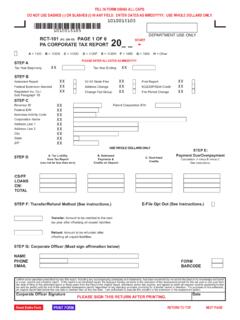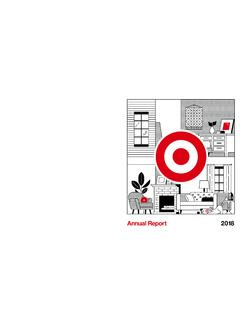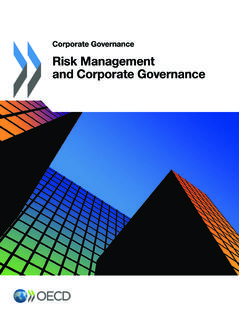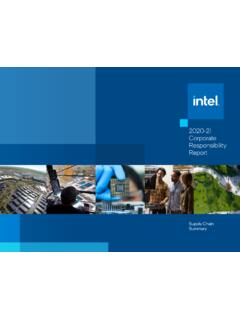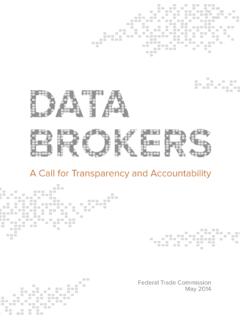Transcription of CORPORATE GOVERNANCE :A US/EU COMPARISON
1 CORPORATE GOVERNANCE A US/EU COMPARISON Course outline by Miguel A. Mendez This material was developed thanks in part to the Global Business Center at the University of Washington under a grant from the Department of Education Miguel A. Mendez CORPORATE GOVERNANCE ; a US / EU COMPARISON - course outline 1 COURSE OUTLINE 1. Introduction to CORPORATE GOVERNANCE a. Introduction b. Defining CORPORATE GOVERNANCE 2. Factors that shape CORPORATE GOVERNANCE a. Impact of ownership and control structures, and patterns o European ownership and control structures, and patterns o US ownership and control structures and patterns b.
2 Influence of the economic model on CORPORATE GOVERNANCE c. Influence of the legal system on CORPORATE GOVERNANCE 3. Key characteristics of the American GOVERNANCE model and those in use across the EU a. Role of the governing body b. Board structure in the EU c. Board structure in the US d. Board composition in the EU and the US Employee representation Shareholders representation Management representation e. Director s nomination 4. Functioning and leadership of governing bodies a. Two-tier board system functioning & leadership b. Unitary board functioning c. Role, number and type of board committees 5.
3 Independence, accountability, transparency, and disclosure a. Independence Board independence in the US Board independence in Europe b. Transparency and disclosure c. Accountability 6. Executive compensation and GOVERNANCE model 7. Suggesting readings and sources for this course Miguel A. Mendez CORPORATE GOVERNANCE ; a US / EU COMPARISON - course outline 2 Objectives 1. To introduce students to what CORPORATE GOVERNANCE really entails. 2. To point out how CORPORATE GOVERNANCE is the result of certain realities; shareholding patterns, economic and legal environments, cultural idiosyncrasies. 3. To sketch the key characteristics of the CORPORATE GOVERNANCE models in use across the EU and in the US.
4 4. To explore how executive compensation is also an element that is influenced by the GOVERNANCE model in use. Miguel A. Mendez CORPORATE GOVERNANCE ; a US / EU COMPARISON - course outline 3 1. Introduction to CORPORATE GOVERNANCE a. Introduction CORPORATE GOVERNANCE remains an obscure issue for business students. Most often it is amalgamated and confused with the issue of ethics. Although ethical behavior is expected from all the actors that take part in the CORPORATE GOVERNANCE process, and specifically from directors and executives, CORPORATE GOVERNANCE at its core is about the characteristics of a governing process and not about a particular behavioral trait.
5 The recent wave of financial scandals to hit the US has prompted renewed focus on cor-porate GOVERNANCE . In this context a COMPARISON with European CORPORATE GOVERNANCE is most instructive. b. Defining CORPORATE GOVERNANCE There are many different definitions of CORPORATE GOVERNANCE . They all invariably address the following central theme. CORPORATE GOVERNANCE is the framework of laws, rules, and procedures that regulate the interactions and relationships between the providers of capital (owners), the governing body (the board or boards in the two-tier system), seniors managers and other parties that take part to varying degrees in the decision making process and are impacted by the company s dispositions and business activities.
6 CORPORATE GOVERNANCE defines their res-pective roles and responsibilities and their influence in steering the course of the com-pany. Calpers definition is as follows; the relationship among various participants in determining the direction and performan-ce of corporations Power Point slides for this section Power point slide 1 A COMPARISON between the US and the EU Power point slide 2 What is CORPORATE GOVERNANCE Power point slide 3 Roles and prerogatives of the key players Miguel A. Mendez CORPORATE GOVERNANCE ; a US / EU COMPARISON - course outline 4 2. Factors that shape CORPORATE GOVERNANCE CORPORATE GOVERNANCE does not occur in a vacuum.
7 It reflects the economic, historical, cultural and legal characteristics of a country, its business history and CORPORATE land-scape. It is also shaped by the ownership structures and patterns of that economy and by the financing options available to businesses. We are referring to the role played by the financial markets, the banking/insurance sectors and in some countries the government as shareholders and providers of capital. Differences in these areas account for some of the notable differences in the GOVERNANCE models found on either side of the Atlantic. a. Impact of ownership and control structures and patterns on CORPORATE GOVERNANCE CORPORATE GOVERNANCE is inextricably linked to the ownership, control structures and patterns prevalent in an economy.
8 Distinguishing between ownership and control and explaining the agency factor, the owners of the firm hire managers (agents ) who control and manage the assets of the firm is an intrinsic feature of the corporation and one that is central to any CORPORATE go-vernance model. Ownership and control patterns that prevail in the EU The European CORPORATE ownership map can be broadly categorized in two groups: The financial markets dominated model prevalent in the UK, is characterized by a dispersed ownership and control structure and the prevalence of the institutional investors. According to the recent British Paul Myners report individual share ownership has fallen from over 50% of the market in the 1960s to less than one fifth today.
9 The bank oriented model prevalent in Continental Europe is characterized by a certain degree of ownership concentration, and more importantly a great degree of control concentration, in the hands of one or a handful of shareholders the blockholders . It is bank oriented, instead of financial markets oriented, because of the central role played by financial institutions (banks and insurance companies) in providing capital to the CORPORATE sector. It is insider dominated Miguel A. Mendez CORPORATE GOVERNANCE ; a US / EU COMPARISON - course outline 5 instead of outsider dominated because these institutions are closely involved in the affairs of the companies, and are generally represented on the board.
10 How do these ownership and control landscapes translate into differences in the CORPORATE GOVERNANCE models. The CORPORATE GOVERNANCE weakness that arises from the ownership landscape prevalent in continental Europe is one of strong blockholders, weak dispersed owners. The dis-persed owners that in the aggregate hold the majority of the capital are often at the mercy of blockholders that appoint the managers and devise strategies that tend to further their own interest instead of that of the majority of shareholders. In the UK on the other hand the ownership and control landscape can be broadly des-cribed as dispersed and highly fragmented, a direct consequence of central role of the financial markets.





